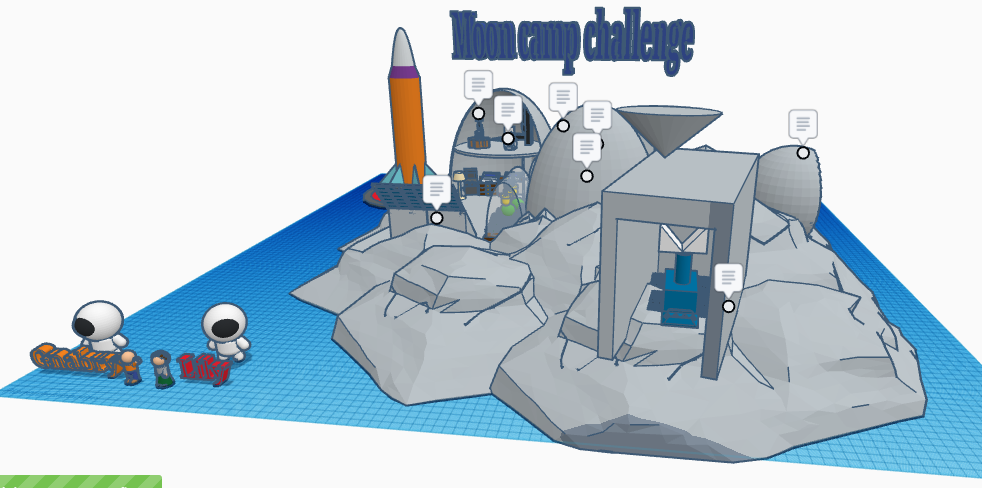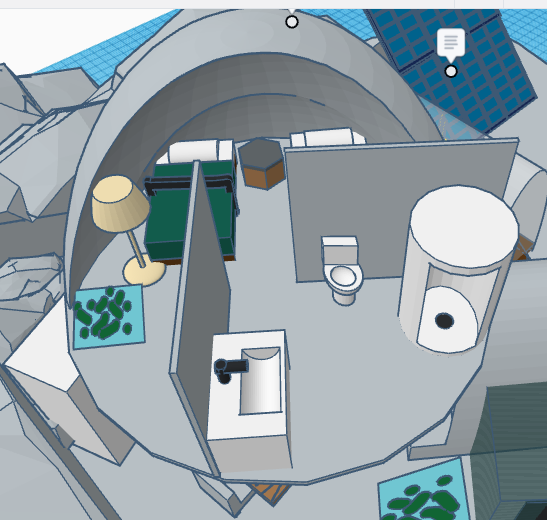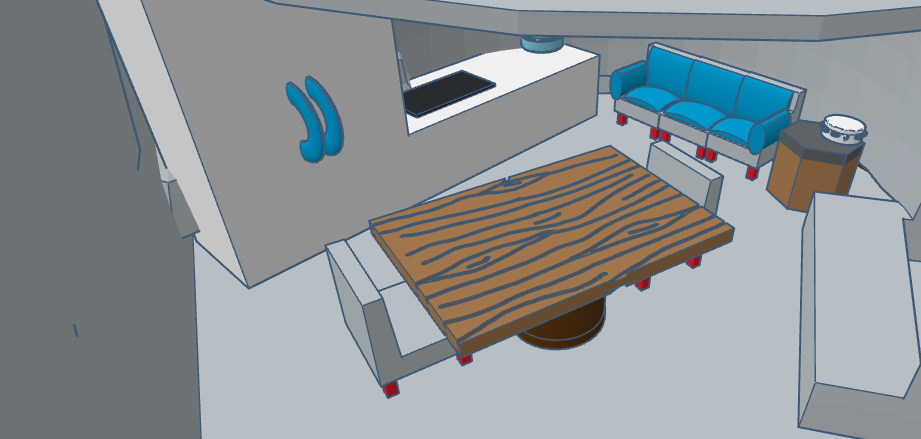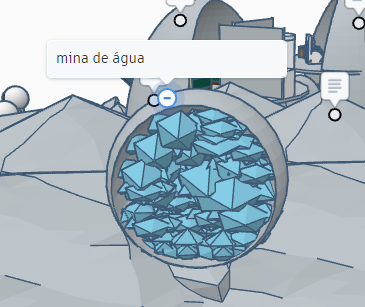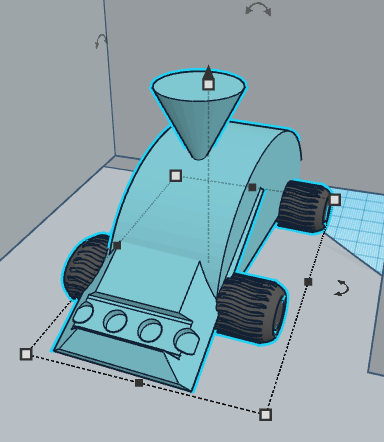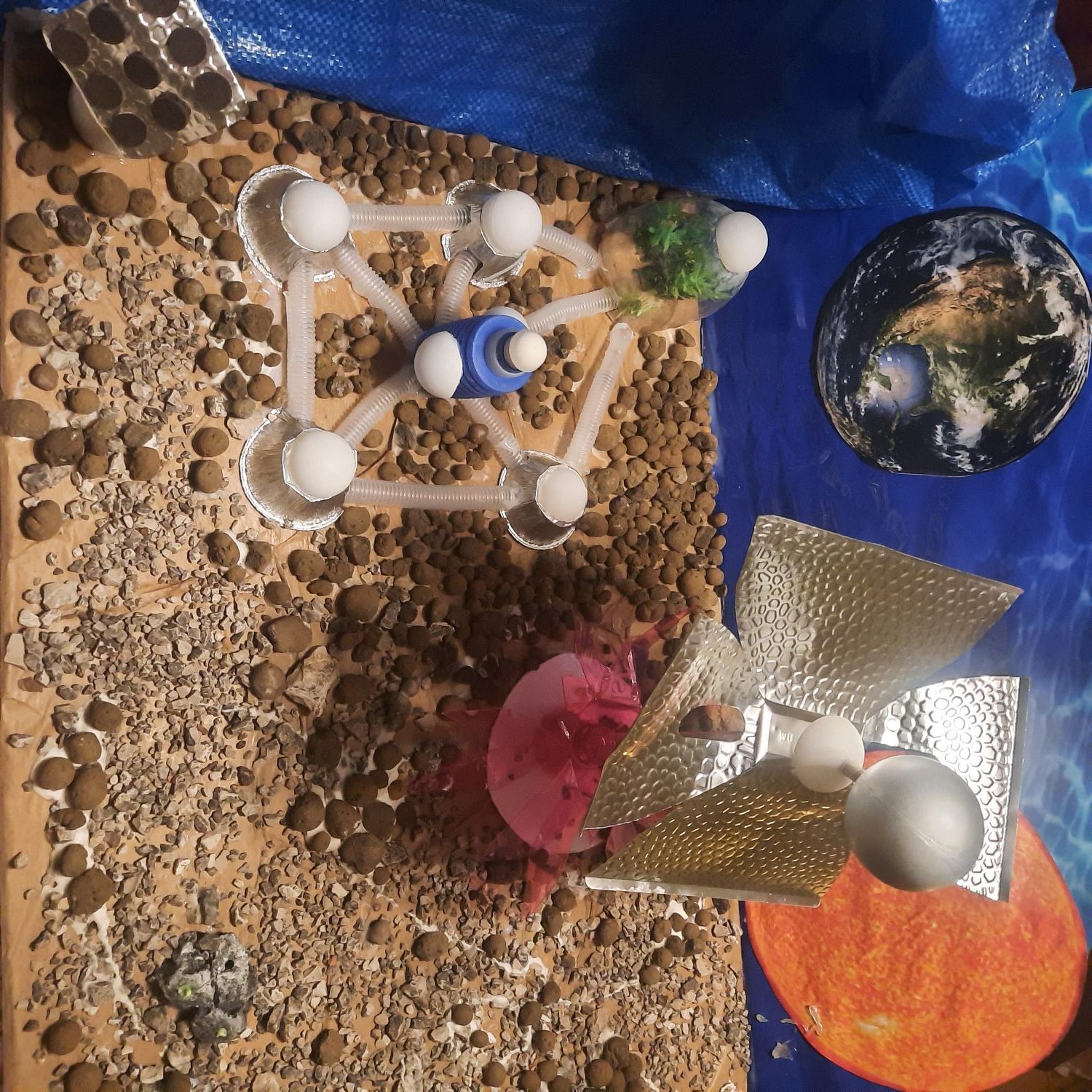Moon Camp Explorers Gallery 2021-2022
In Moon Camp Explorers each team’s mission is to 3D design a complete Moon Camp using Tinkercad. They also have to explain how they will use local resources, protect astronauts from the dangerous of space and describe the living and working facilities.
Team: AstroFriends
Externato Marcelino Champagnat Lisbon Portugal 11 2 / 1
External link for 3d
|
Project description
Our colony will be sent to the moon a year before the astronauts to be built by robots. It will have two compartments: the living compartment, which contains algae pools and vegetable gardens for oxygen food, a space bathroom, bedrooms, a recreation area and a space kitchen; and the office compartment, which contains algae for oxygen, robot loading area, computer room, laboratory, space bathroom and gym with space exercise equipment! Joining them we have the machinery corridor. All the doors will have a closing vacuum system. |
||||
|
Where do you want to build your Moon Camp?
Shackleton crater Why did you choose this location?
We chose this location as it has been nominated for a lunar colony for humans and also because it has more than 80% exposure to the sun. As it is close to the poles it contains water in a frozen state. How do you plan to build your Mooncamp? Which materials will you use?
We plan to send a rocket a year before the astronauts, with the base capsules already used in previous missions and with robots/3D printers, which will use lunar soil to build a protective barrier around the base and the camp furniture. A year after, we will send the astronauts and all the technologies and resources they need to live. |
||||
|
Water
|
Food
|
Electricity
|
Air
|
Protection
|
|
First we will send an engine to extract water from the ground at the poles. Then, the ground will be heated to extract oxygen which will be stored for when needed. We will also send a shipment of ground water for the first few days and assemble a water recycling system in the passenger compartment. |
Food will be provided by vertical vegetable gardens throughout the cabin. The gardens will be powered by solar panels that provide light to artificial bulbs in the cabin. The farming soil will be brought from Earth. |
We plan to assemble several solar panels along the crater with batteries to store energy for use when no sun is available. Energy transportation will be done through cables connected to the camp under the ground, to avoid potential damage. |
We planned to produce breathable air through chemical processes such as water electrolysis, and through biological processes taking place in the algae pools (8 m2 per person) and vertical gardens (13 m2 per person). Initially we will take compressed air from the earth. |
We are going to 3D print a protective layer around the base. The material used will be lunar soil which will protect the infrastructure from radiation and meteorites. The 3D printing will be done by robots, a technique already used in previous missions. |
|
Describe a day on the Moon for one of your Moon Camp astronauts
Gnabry and Lily wake up and take breakfast. They pick strawberries, blueberries and raspberries from their garden and make a delicious red fruit salad. Afterwards, Lily makes a transmission to Earth, while Gnabry tidies up the lab, separating the waste and preparing samples. They have a lunch of rice and tomatoes grown in their garden and meat raised in the lab. Afterwards, they exercise on their equipment (Colbert, ergonomic bicycle and Ared) and take a nap. Meanwhile, the OZOBOT and ENZOBOT robots take samples of the lunar soil for research, which they bring back to the cabin at the end of the day. They dine on a light meal of potatoes and carrots and go to sleep. Tomorrow is a new day. |
||||


